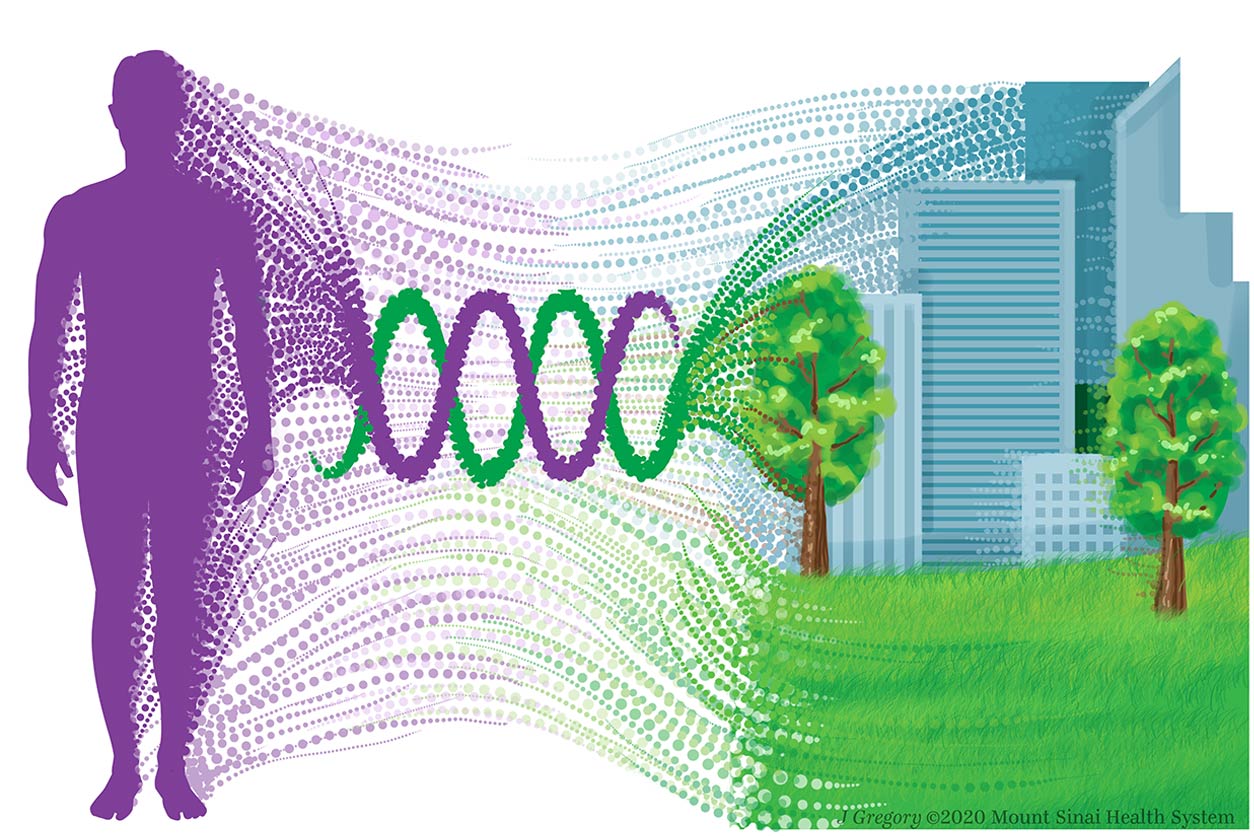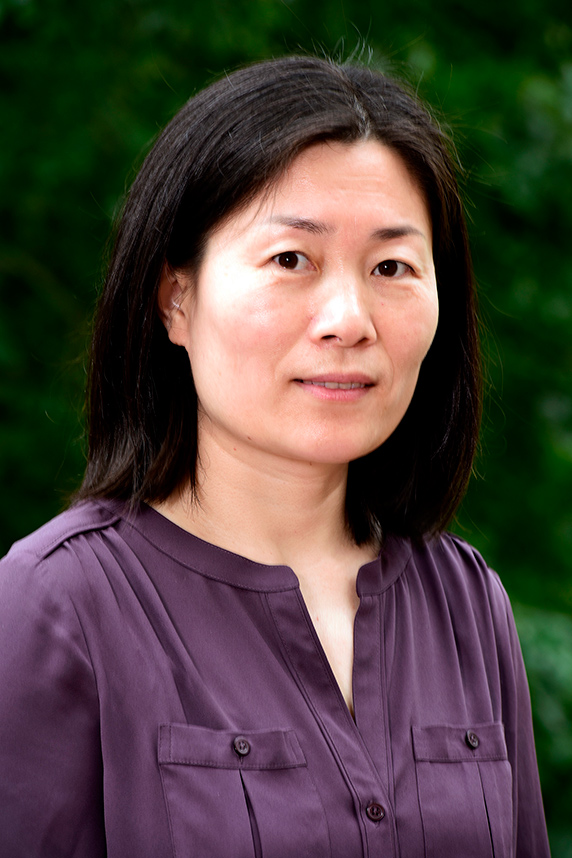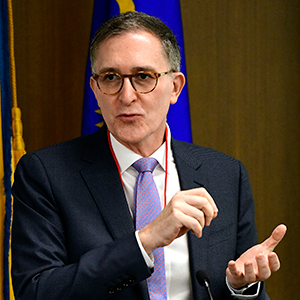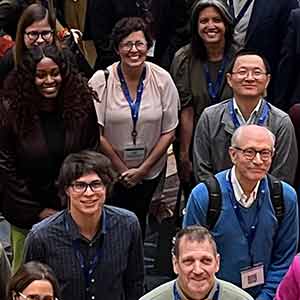A NIEHS-funded team proposed a groundbreaking new way of thinking about the interplay between the environment and the human body. Their theory, published in the November issue of the journal BioEssays, suggests that such complex systems do not interact directly. Instead, their interaction requires formation of a separate entity — the biodynamic interface — that lies between systems and is operationally independent of them.
 BioEssays used this graphical abstract on the issue cover. The caption reads, in part: “It's not the interacting entities that we should be studying, but the process that creates the phenomena that we witness as a result of this interaction.” (Image courtesy of Mount Sinai Health System)
BioEssays used this graphical abstract on the issue cover. The caption reads, in part: “It's not the interacting entities that we should be studying, but the process that creates the phenomena that we witness as a result of this interaction.” (Image courtesy of Mount Sinai Health System)NIEHS grantee Manish Arora, Ph.D., and his colleague Paul Curtin, Ph.D. — both from Icahn School of Medicine at Mount Sinai — developed the theory along with Alessandro Giuliani, Ph.D., from the University of Rome. “We propose the establishment of a new field of inquiry —Environmental Biodynamics — that places time and dynamic interfaces at its core,” the authors wrote.
 Arora, Mount Sinai professor and vice chair of environmental medicine and public health, is funded by eight NIEHS grants. (Photo courtesy of Manish Arora)
Arora, Mount Sinai professor and vice chair of environmental medicine and public health, is funded by eight NIEHS grants. (Photo courtesy of Manish Arora)Trust the process
The classic approach to environmental health research involves what the authors called static analysis (see video in sidebar). Scientists measure an aspect of the environment, such as how much lead is in the water, and link it to an aspect of human development, such as IQ. Though such an approach is valid, Arora and his co-authors argued that it does not capture the dynamic process that exists between the two and varies over time.
To illustrate this biodynamic interface, consider a sheet of paper and a human hand. Scientists using the classic approach could analyze every aspect, down to the ions that make up the paper or tease apart all the tissues and cells of the hand. But, according to Arora, they would never be able to figure out the meaning of what is written on the paper without first understanding the process-based interface, which is writing.
 “The conventional approach taken by many environmental health studies is not enough to completely understand the complex interplay that leads to human health and disease,” said Cui. (Photo courtesy of Steve McCaw)
“The conventional approach taken by many environmental health studies is not enough to completely understand the complex interplay that leads to human health and disease,” said Cui. (Photo courtesy of Steve McCaw)“To understand how the human hand interacts with a piece of paper, we must look at the process that connects these two systems,” said Arora. That process is writing.
“The biodynamic interface concept provides a much-needed theoretical framework for environmental health research,” said Yuxia Cui, Ph.D., NIEHS program officer. “It is a very powerful theory because it helps us to visualize the complex interactions between the world around us and our own bodies.”
Insight from autism and metals
This new approach sheds light on the relationship between metals and autism spectrum disorder (ASD), the authors explained. Using traditional frameworks, they had attempted to characterize the connection between metal exposure and ASD, but the relationship proved weak.
So they shifted focus to the dynamics of how the body assimilates metals and found startlingly different results. 'When we considered the biodynamics of elemental assimilation … we saw consistent and strong associations between elemental exposure and autism phenotype across markedly different populations in three different countries.'
New methods, new training
“The new Environmental Biodynamics discipline needs to be nimble enough to consider the influence of the built and social environments on health,” wrote Erin Haynes, Ph.D., from the University of Kentucky.
'To obtain the variables needed, the Environmental Biodynamician will require improved geospatial analytics; family and social dynamics; environmental and clinical technology that is capable of quantifying exposure duration, dose, and accumulation over time and space; and assessing human physiological characteristics over time,' she explained in an “Idea to Watch” essay that accompanied the paper.
From theory to practice
 “The RIVER program gives scientists like Arora the intellectual and administrative freedom to push their research in new and important directions,” said Collins. (Photo courtesy of Steve McCaw)
“The RIVER program gives scientists like Arora the intellectual and administrative freedom to push their research in new and important directions,” said Collins. (Photo courtesy of Steve McCaw)Arora studies the biodynamic interface with an NIEHS Revolutionizing Innovative, Visionary Environmental Health Research (RIVER) grant, which provides $8 million over eight years. He has assembled an interdisciplinary team with expertise that spans clinical medicine, environmental health, nuclear physics, mathematical modeling, analytical chemistry, and toxicology.
The scientists examine interactions between the environment and human health in disorders that appear at all stages of life: autism, attention-deficit/hyperactivity disorder, schizophrenia, amyotrophic lateral sclerosis (also known as ALS or Lou Gehrig’s disease), and others. By applying newly developed technology, they hope to create early warning systems to predict and even prevent these diseases long before clinical signs appear.
“This groundbreaking project is well-suited for the RIVER program because, if successful, the work can be extended to other diseases,” said Jennifer Collins, RIVER coordinator for NIEHS. “It has the potential to provide a new model to broadly characterize the trajectories of human health and disease.”
Citations:
Arora M, Giuliani A, Curtin P. 2020. Biodynamic interfaces are essential for human-environment interactions. BioEssays 42(11):e2000017.
Curtin P, Austin C, Curtin A, Gennings C, Arora M; (for the Emergent Dynamical Systems Group), Tammimies K, Willfors C, Berggren S, Siper P, Rai D, Meyering K, Kolevzon A, Mollon J, David AS, Lewis G, Zammit S, Heilbrun L, Palmer RF, Wright RO, Bolte S, Reichenberg A. 2018. Dynamical features in fetal and postnatal zinc-copper metabolic cycles predict the emergence of autism spectrum disorder. Sci Adv 4(5):eaat1293.
Haynes EN. 2020. Environmental Biodynamics: A Bold New Frontier. BioEssays 42(11):e2000225.
(Marla Broadfoot, Ph.D., is a contract writer for the NIEHS Office of Communications and Public Liaison.)









